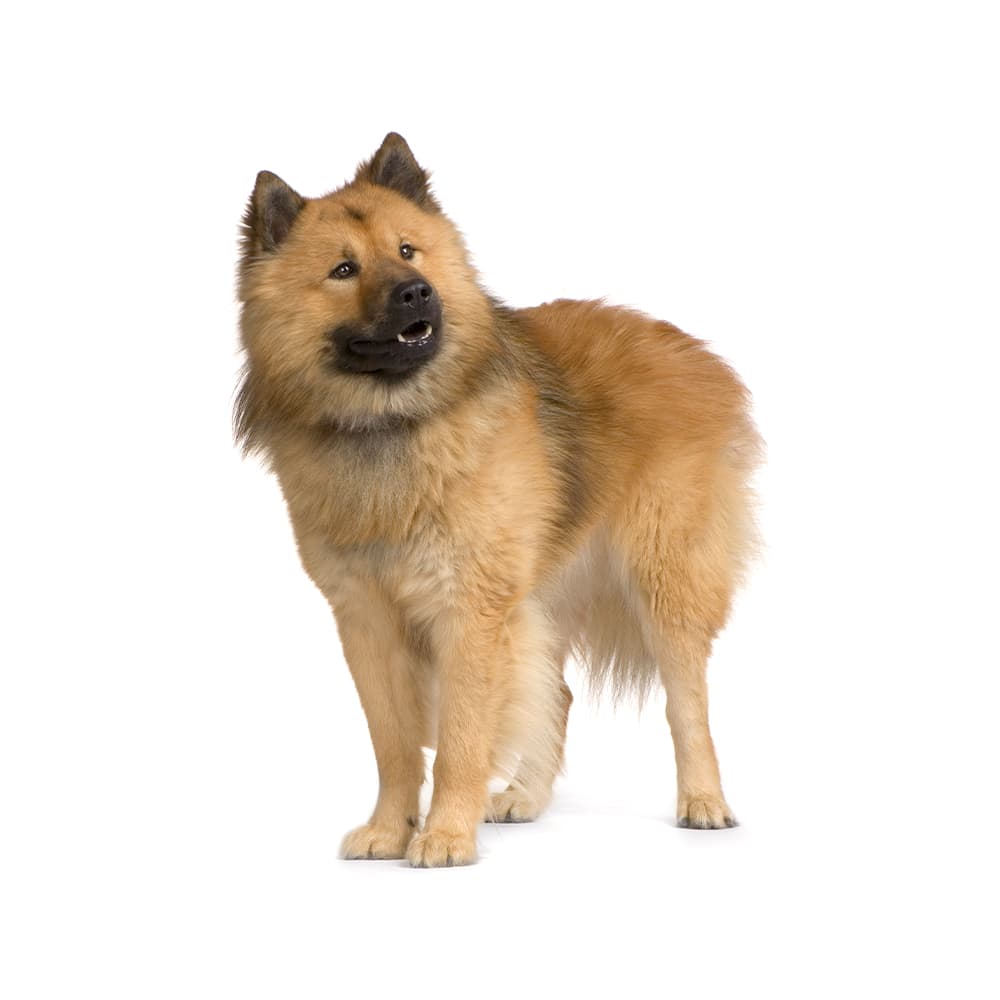Discover your dog's connection to this breed and 200+ others


Discover your dog's connection to this breed and 200+ others



The Eurasier dog breed was developed in Germany by Julius Wipfel in the early 1960s. The breed's lineage comes from the cross-breeding of the Chow Chow, the Wolfspitz, also known as the Keeshond, and the Samoyed. Wipfel's intention was to create a breed with the best qualities of all three ancestors: the health, resilience, and temperament suitable for a family dog.
Eurasiers may suffer from eye conditions, including distichiasis, ectropion, entropion, and progressive retinal atrophy. They may also be affected by Dandy–Walker malformation, degenerative myelopathy, hip and elbow dysplasia, epidermolysis bullosa simplex, exocrine pancreatic insufficiency, gastric torsion, hypothyroidism, and patellar luxation.
Eurasiers are known for their calm, balanced, and self-assured demeanor. They are deeply attached to their human families and can be reserved towards strangers. However, they are not aggressive. Eurasiers are intelligent and learn quickly but may display a degree of independence. Despite their origin from breeds used for work in harsh climates, Eurasiers are companion dogs. They require consistent social contact with their family and should not be kept in a kennel or as an outdoor-only dog. Overall, with the right training and socialization, Eurasiers can make excellent family pets due to their loyal, gentle, and calm nature.
A canine genetic lineage is a group of individuals or entire breeds that descended from common ancestors predating modern breed formation. Often these lineages are associated with a ‘type’ of dog with a unique historical working role and associated behaviors (e.g., herding, scent hunting, etc.).
Spitz and Sled Dogs originate in the Arctic and subarctic regions which caused them the develop adaptations to cold climates. Some of these adaptations give rise to characteristics of the lineage, most notably a dense double coat that helps with insulation. The lineage of these dogs can be followed back to ancient breeds developed by Indigenous people. These ancient breeds were used as an aid for transportation, herding, guarding, and hunting. These jobs have created dogs that are independent, intelligent and have strong work ethics as well as a sturdy body that helps them to pull sleds or go on long journeys over rough terrain.
Example breeds with ancestry from this lineage include Akita, Chow Chow, and Siberian Husky.
Eurasiers inherit their genes from the Chow Chow, Wolfspitz, and Samoyed. They bear the distinct physical characteristics of these breeds, including the curled tail from the Chow Chow and Samoyed, the dense double-coat from all three breeds, and the spitz-like face.
The breed was called Eurasier to reflect their Asian and European heritage.
The Eurasier was recognized by the Fédération Cynologique Internationale (FCI) in 1973.
Doi:10.1002/9781119540687 https://www.ukcdogs.com/eurasier https://www.akc.org/dog-breeds/eurasier/ https://www.fci.be/Nomenclature/Standards/291g05-en.pdf
https://www.edelweisseurasiers.com/health.html
Recommended by top vets with decades of experience
21 breeds
64 genetic health markers
50 genetic trait markers
